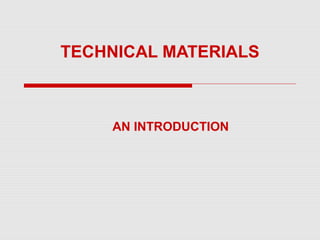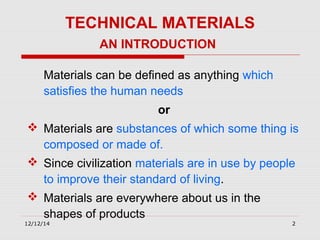This document provides an introduction to technical materials. It discusses that materials have historically evolved from natural substances like stone and wood to more advanced materials developed through research. Materials can be classified into main categories including metals, polymers, ceramics, composites, and electronics. The properties and performance of a material depend on its structure and processing, and engineers must understand these relationships to select the optimal material for a given application.













































